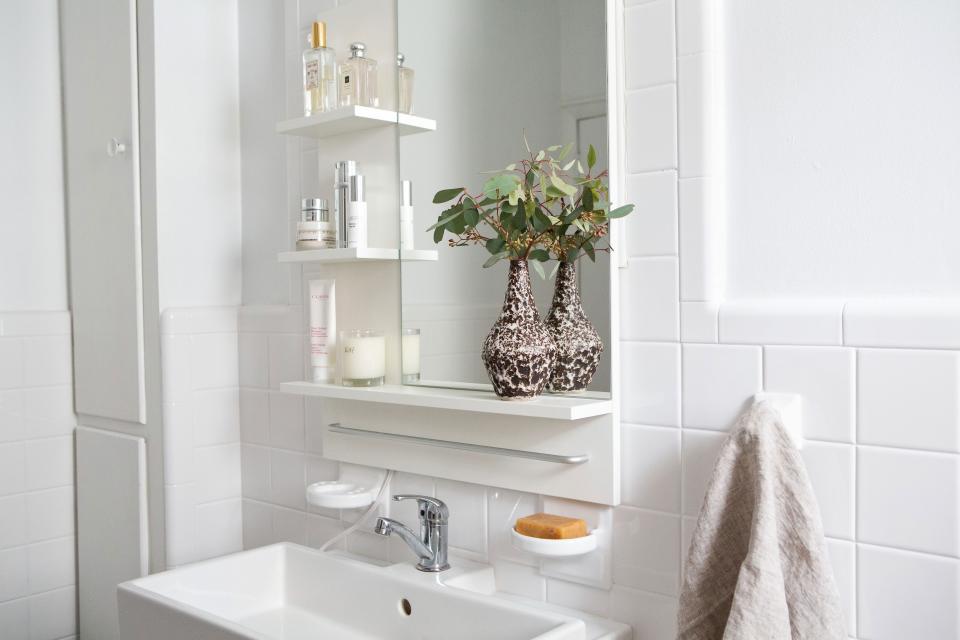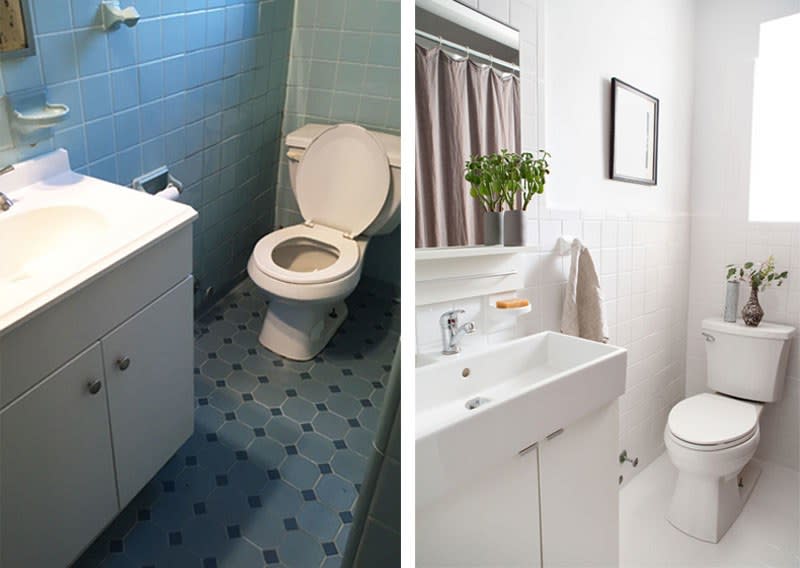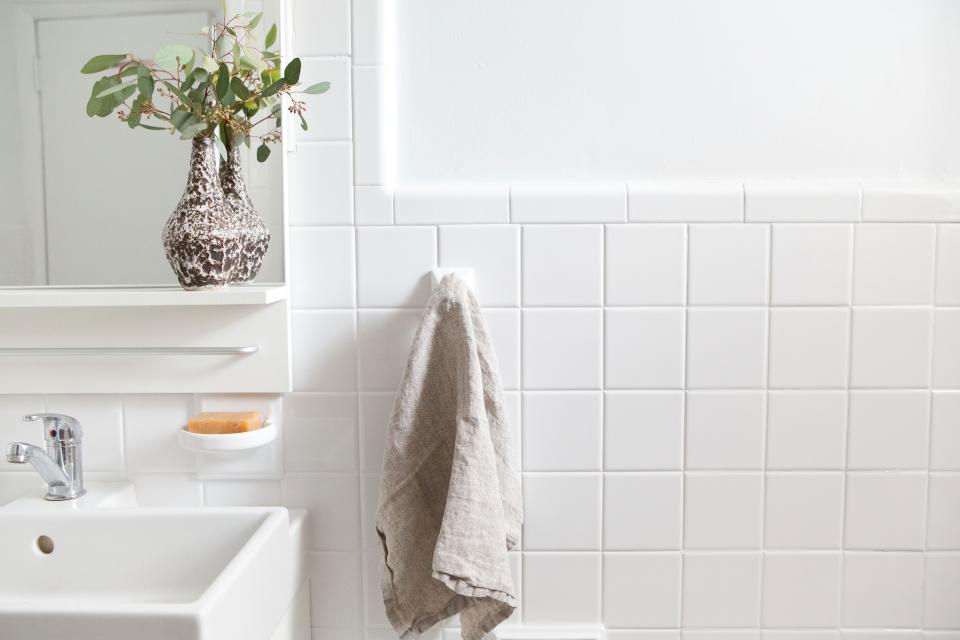Reglazing Tile Is the Most Transformative Fix for a Dated Bathroom
When you're "blessed" with a colorfully tiled bathroom right out of the 1950s (peach? teal? faded yellow?), only two paths forward readily present themselves: Deal with it, or renovate. But a third option—reglazing tile, tubs, and sinks—has crept onto our radar, a fix that requires neither the time nor cost of a gut renovation yet can be nearly as transformative. Maybe you've heard of it by another name: Reglazing is also called resurfacing, refinishing, or even painting (though the last isn't accurate), depending on whom you're talking to. But the process is the same: A professional will come to your home and, after a deep cleaning of the bathroom in question, spray a very thin, opaque, gleaming coat of enamel across the tile, sink, tub, or all of the above—wholly transforming the room in a matter of hours.
To learn more, we caught up with designer and blogger Athena Calderone of EyeSwoon and the pros at Supreme Bath Refinishing, who Calderone called on to overhaul her Brooklyn bathroom last year by reglazing the tile (she chronicled it in this blog post). Your granny-pink bathroom is about to become a clean, bright white.
reglazing tile athena calderone before after
The difference a day can make.
After photo: Sarah Elliott
Calderone sprung for the service, which she "discovered out of desperation," because the bathroom she'd regularly be using during an extensive renovation was a "scuzzy powder blue, time-worn, stained." The overhaul cost her under $1,000 and only took a day—a worthwhile expenditure for such a transformative, fuss-free change. Frank Umarov, the owner of Supreme Bath (the company she used), backs up the costs: They charge $350 to resurface a basic tub, $750 to do just the tile, and anywhere from $950 to $1,200 to do tiles and a tub depending on the size and condition of the space. (He assures me that there really are no hidden costs—but sure, if you want one of those textured safety finishes on the tub floor, or some caulking work done, that will be a little extra.) According to Sweeten, $15,000 is "a good starting point for a basic bathroom renovation in NYC," which really puts the savings in perspective. Reglazing is definitely a cost-saving route to take, whether you're using it as a stopgap or the final step. And a pretty simple process, too: If the tiles you're reglazing are still glossy, the pros will first acid-etch them to remove the shine and then clean the surface with chemicals to remove every last bit of oil and grease, all in the name of making sure the enamel sticks. "If you don't clean and lightly sand your tiles, the paint will peel right off," designer Nick Olsen told us (speaking from a less-than-optimal experience). Then, they'll spray three or four coats of glossy enamel over the surfaces. Umarov reports that some people have started requesting a matte finish, but it cannot be done—your tiles, rendered absorbent, would dirty in just a few months!
reglazing tile athena calderone bathroom
Post-reglazing, the tile looks brand-new.
Photo: Sarah Elliott
You might have paused at the fact that the new liquid enamel coating is sprayed on, but Umarov says that it's the best way to get that perfectly smooth finish. So yes, they're actually enameling over the grout as well as the tile (only a few millimeters thick, so the grooves won't be filled in), meaning both grout and tile will end up one uniform color—if you want contrasting grout, you're out of luck. (Supreme Bath offers upwards of 50 colors; white is the most popular, though Umarov did mention that ice gray is having a moment.) It takes about a day to have a reglazing job done, and then you need to let it cure for 24 hours, 12 at minimum if it's your only bathroom and you really need to pee. Then, poof!—your granny bath will be a thing of the past.



